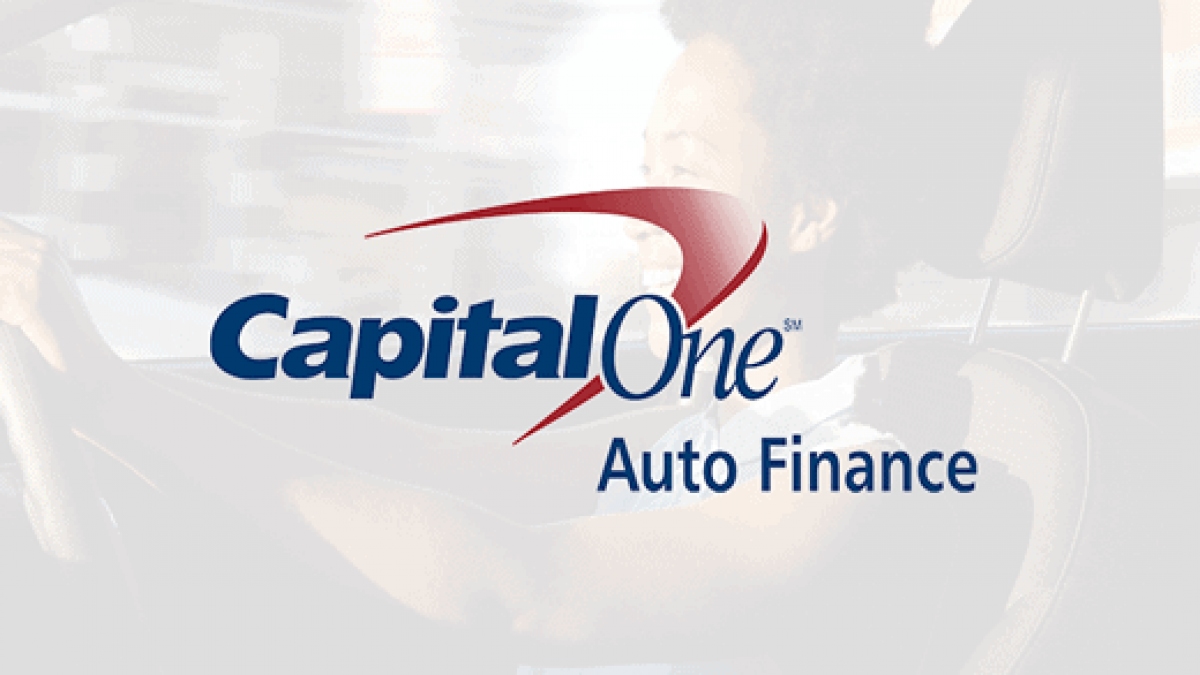

Finance
Why Does Car Insurance Go Up Every 6 Months
Published: November 23, 2023
Discover why car insurance rates increase every 6 months and how it impacts your finances. Learn valuable tips to manage these cost fluctuations.
(Many of the links in this article redirect to a specific reviewed product. Your purchase of these products through affiliate links helps to generate commission for LiveWell, at no extra cost. Learn more)
Table of Contents
- Introduction
- Factors that Impact Car Insurance Rates
- Inflation and Cost of Living Adjustments
- Insurance Company Policies and Profitability
- Changes in Personal Circumstances
- Increasing Car Accident Rates and Claims
- Rising Medical Costs and Auto Repair Expenses
- Insurance Fraud and Uninsured Motorists
- Technology and Vehicle Features
- State and Legislative Changes
- Conclusion
Introduction
Car insurance is a necessary expense for vehicle owners, providing financial protection in the event of accidents, theft, or damage to their vehicles. However, many car owners have noticed a frustrating trend – their car insurance rates seem to increase every six months, even when they haven’t had any accidents or violations. This raises the question: why does car insurance go up every six months?
Understanding the factors that influence these rate increases is crucial for car owners to make informed decisions and manage their finances effectively. While there can be variations based on individual circumstances and location, there are several common reasons why car insurance premiums tend to rise on a semi-annual basis.
In this article, we will explore the various factors that contribute to the increase in car insurance rates. We will delve into the impact of inflation and cost of living adjustments, insurance company policies and profitability, changes in personal circumstances, increasing car accident rates and claims, rising medical costs and auto repair expenses, insurance fraud, uninsured motorists, technology advancements, and state and legislative changes.
By gaining a deeper understanding of these factors, car owners can be better prepared to navigate the complex world of car insurance and potentially mitigate the impact of rising premiums. So, let’s dive in and explore why car insurance rates seem to climb every six months.
Factors that Impact Car Insurance Rates
Car insurance companies consider a variety of factors when determining the premium rates for an individual. These factors take into account the level of risk associated with insuring the driver and the likelihood of accidents or claims. Let’s delve into some of the major factors that can impact car insurance rates:
- Driving Record: One of the most significant factors influencing car insurance rates is the driver’s past driving record. If a driver has a history of accidents, traffic violations, or DUI convictions, insurance companies consider them to be a higher risk and may increase their premiums accordingly.
- Age and Gender: Younger drivers, especially teenagers, are statistically more likely to be involved in accidents compared to older, more experienced drivers. Additionally, males tend to have higher accident rates than females in certain age groups, which may result in higher insurance rates for young male drivers.
- Location: The location where a car is primarily driven and parked can impact insurance rates. Areas with higher population density, more traffic congestion, and higher crime rates may lead to higher premiums due to the higher risk of accidents, theft, and vandalism.
- Vehicle Type: The make, model, and age of the vehicle can affect insurance rates. Cars that have a higher likelihood of being stolen or are expensive to repair may have higher premiums. Safety features and anti-theft devices can potentially lower insurance costs.
- Credit History: In some states, insurance companies may consider an individual’s credit history as a factor in determining insurance rates. Insurers believe that individuals with good credit are more likely to be responsible and less likely to file claims.
- Annual Mileage: The number of miles driven annually also comes into play when determining insurance rates. Individuals who drive more miles are exposed to a higher risk of accidents and, therefore, may have higher premiums.
- Insurance Coverage Level: The level of coverage opted for also impacts insurance rates. Higher coverage limits and additional coverage options, such as comprehensive and collision coverage, will result in higher premiums.
These are just a few of the significant factors that can influence car insurance rates. It’s essential to note that different insurance companies may weigh these factors differently, so it’s always a good idea to shop around and compare quotes from multiple insurers to find the best rates and coverage options.
Inflation and Cost of Living Adjustments
One of the primary reasons why car insurance rates tend to increase every six months is due to inflation and cost of living adjustments. Inflation refers to the general increase in prices over time, which affects the cost of goods and services in various industries, including the insurance industry.
As the cost of living rises, insurance companies need to adjust their premiums to keep up with the increased expenses they face. This can include higher costs for labor, materials, office space, and other operational expenses. Insurers also need to account for inflation in car repair costs, medical expenses, and legal fees.
Additionally, insurance companies factor inflation into their long-term projections to ensure that they can cover potential future claims adequately. They must estimate the cost of future claims based on projected inflation rates to maintain their financial stability and meet their obligations to policyholders.
It’s important to note that these inflation-related adjustments are not exclusive to car insurance but apply to various types of insurance policies. Health insurance, homeowners insurance, and other forms of insurance also experience periodic rate increases due to rising costs.
While inflation plays a significant role in driving up insurance premiums, it is worth mentioning that the rate of increase may vary between insurance providers. Some companies may be more affected by inflation than others due to their operational structure, investment strategies, and overall risk assessment models.
To keep insurance coverage affordable, it’s advisable for car owners to review their policies regularly and compare quotes from different insurers. By doing so, they can find providers that offer competitive rates and take advantage of any cost-saving opportunities available.
Insurance Company Policies and Profitability
Another factor that contributes to the increase in car insurance rates every six months is the policies and profitability goals of insurance companies. Insurance companies are profit-driven businesses, and they constantly evaluate their pricing strategies to ensure they remain profitable in a highly competitive market.
Insurance companies regularly review their claims data, assess their financial performance, and adjust their pricing models accordingly. If an insurance company experiences higher claim payouts or a decrease in revenue, they may need to raise their premiums to maintain profitability. This is particularly true if the company has experienced a higher-than-expected number of claims, costly settlements, or an increase in the severity of accidents.
In addition to claims data, insurance companies also consider other factors when setting their rates. These may include historical trends, actuarial analysis, and predictive models that help determine the likelihood of future claims or losses.
Insurance companies also take into account the investment income they generate from the premiums they collect. They invest the premium dollars in various financial instruments to generate returns and offset the cost of claims. However, if the investment income falls short of expectations due to economic factors or market conditions, insurance companies may need to increase premiums to maintain their desired level of profitability.
Insurance companies also consider their overall operating expenses, such as administrative costs, marketing expenditures, and agent commissions. If these costs increase, insurers may pass on some of the expenses to policyholders through higher premiums.
It’s essential to note that profitability is a key priority for insurance companies, as they need to ensure they remain financially stable and capable of paying out claims. While it may be frustrating for policyholders to see increasing rates, it’s necessary for insurers to maintain their ability to serve their customers and fulfill their contractual obligations.
To navigate the impact of insurance company policies on rate increases, it’s wise to regularly review your policy, communicate with your insurer, and consider shopping around for the best rates. Comparing quotes from multiple insurance providers can help find better or more affordable coverage options that align with your needs and budget.
Changes in Personal Circumstances
Changes in personal circumstances can also have a significant impact on car insurance rates. Insurance premiums are not solely based on historical data and market factors; they are also influenced by the specific characteristics and situation of the insured individual. Here are some personal factors that can lead to changes in car insurance rates:
- Age and Marital Status: As individuals age, they may experience changes in their car insurance rates. Younger drivers, especially teenagers, are often considered higher risk due to their lack of driving experience. However, rates may decrease as individuals gain more driving experience and enter certain age brackets. Additionally, married individuals may qualify for lower rates as they may be seen as more responsible and less likely to engage in risky behavior.
- Residential Address: Relocating to a different area can impact car insurance rates. If the new location has a higher accident rate, crime rate, or different insurance requirements, premiums may increase. Conversely, moving to an area with lower risk factors can result in reduced insurance rates.
- Occupation: Certain occupations are associated with lower risk and may be eligible for discounted rates. For example, individuals in professions that require minimal driving or have a lower likelihood of accidents, such as teachers or nurses, may qualify for lower premiums.
- Driving Habits: Any significant changes in driving habits can affect insurance rates. For instance, if an individual starts commuting longer distances or driving for work purposes, their rates may increase due to the increased exposure to risk. Similarly, if a driver significantly reduces their annual mileage, they may be eligible for lower rates.
- Adding or Removing Drivers: Adding a new driver, such as a teenager or someone with a poor driving history, to a policy can increase the overall premium. On the other hand, removing a high-risk driver from the policy, such as a driver with multiple violations or accidents, may lead to a decrease in premiums.
- Credit Score: In some states, insurance companies use credit scores as a factor in determining rates. Individuals with lower credit scores may experience higher premiums as they are seen as a higher risk. It’s important to maintain good credit to potentially secure better rates.
It’s essential to inform your insurance company about any significant changes in your personal circumstances that may impact your policy. This might include changes in the number of drivers, address, occupation, or mileage. By keeping your insurer updated, they can accurately assess your risk profile and adjust your rates accordingly.
It’s worth noting that while some personal circumstances can lead to increased insurance rates, others may result in a decrease. The specific impact will vary depending on the insurance provider and their assessment of risk factors. Understanding the relationship between personal circumstances and car insurance rates can help you make informed decisions and potentially find ways to mitigate any negative impacts.
Increasing Car Accident Rates and Claims
One of the main reasons for the upward trend in car insurance rates every six months is the increasing number of car accidents and claims. As the frequency and severity of accidents rise, insurance companies face a higher financial burden, which is reflected in higher premiums for policyholders.
Several factors contribute to the increasing car accident rates and claims:
- Distracted Driving: The proliferation of mobile devices and other distractions has led to a surge in distracted driving incidents. Drivers who use their phones, eat, or engage in other distracting activities while behind the wheel are more prone to accidents.
- Drunk Driving: Despite strict laws and awareness campaigns, drunk driving remains a significant problem. Intoxicated drivers pose a high risk of causing accidents and generating costly insurance claims.
- Speeding and Reckless Driving: Many accidents are caused by drivers who exceed speed limits or engage in reckless driving behavior. These incidents often result in severe injuries and substantial property damage, leading to higher insurance payouts.
- Weather Conditions: Adverse weather conditions, such as heavy rain, snowstorms, or ice, contribute to a significant number of accidents. Poor road conditions and reduced visibility increase the risk of collisions and subsequent insurance claims.
- Population Growth: As the population expands, more vehicles are on the road, leading to increased congestion and a higher likelihood of accidents.
- Increased Mileage: With longer commutes and travel distances becoming more common, there is a higher chance of accidents occurring due to the increased time spent on the road.
- Rising Medical Costs: Medical expenses related to car accident injuries have been consistently increasing. Insurance companies need to account for these increased costs when determining premiums. The rising cost of healthcare services, medications, and rehabilitation contribute to higher insurance claims.
- Legal Settlements: Legal settlements resulting from car accidents can be substantial, especially in cases involving severe injuries or fatalities. Insurance companies must allocate funds to cover potential settlements, which can impact premium rates.
Due to these factors, insurance companies find themselves paying out more in claims, leading to the need for higher premiums to offset these increased expenses. It’s important to note that insurance rates are not solely based on an individual’s driving history but are also influenced by overall trends in accidents and claims.
While drivers have limited control over some of these factors, such as weather conditions or population growth, practicing safe driving habits, staying alert on the road, and following traffic laws can minimize the risk of accidents. By being proactive and cautious, drivers can potentially avoid accidents and help contribute to the overall reduction of claims, which may have a positive impact on insurance rates in the long run.
Rising Medical Costs and Auto Repair Expenses
Another factor contributing to the increase in car insurance rates every six months is the rising costs of medical care and auto repairs. Advances in technology, inflation, and increased demand for healthcare services all contribute to the soaring medical expenses associated with car accidents.
Here are the key factors driving up medical costs:
- Advancements in Medical Technology: As medical technology advances, the cost of equipment, procedures, and treatments increases. Sophisticated diagnostic imaging, specialized surgeries, and advanced rehabilitation techniques can all contribute to higher medical bills.
- Inflation in the Healthcare Industry: Like other industries, the healthcare sector experiences inflation, meaning that the cost of medical services increases over time. The rising costs of medications, medical supplies, and hospital stays all contribute to higher medical expenses for car accident injury treatment.
- Increased Demand for Healthcare: A growing population and aging demographics contribute to an increased demand for medical services. This heightened demand can place additional strain on healthcare resources and contribute to higher costs.
In addition to rising medical costs, the expense of repairing vehicles involved in accidents has also been steadily increasing. Here are the main factors impacting auto repair expenses:
- Advancements in Vehicle Technology: Modern vehicles are equipped with advanced safety features and sophisticated technology. While these features enhance safety, they also drive up repair costs. Repairing or replacing sensors, cameras, and other high-tech components can be costly.
- Inflation in Auto Repair Industry: As with any industry, auto repair costs experience inflation. Labor rates, the cost of parts, and overhead expenses continue to rise, leading to higher repair bills.
- Complexity of Vehicle Designs: Vehicles are becoming more complex and intricate, making certain repairs more time-consuming and challenging. From computerized systems to specialized materials, repairing modern vehicles requires specialized knowledge and equipment, leading to increased expenses.
- Increased Vehicle Value: The rising cost of vehicles also contributes to higher repair costs. As the value of cars goes up, so does the expense of repairing or replacing damaged parts.
The combination of rising medical costs and auto repair expenses puts additional financial pressure on insurance companies. To cover these increased expenses, insurers adjust their premium rates to maintain their financial stability and ensure they can adequately cover the costs of claims.
While individuals may not have control over the rising costs of medical care or auto repairs, they can take steps to mitigate the impact. Choosing vehicles with lower repair costs and maintaining a safe driving record can reduce the likelihood of accidents and subsequent insurance claims. Additionally, reviewing insurance policies regularly and comparing quotes from different providers can help individuals find more affordable coverage options without compromising on necessary protection.
Insurance Fraud and Uninsured Motorists
Insurance fraud and the prevalence of uninsured motorists are two significant factors that contribute to the increase in car insurance rates every six months. These issues place a financial burden on insurance companies, ultimately leading to higher premiums for policyholders.
Insurance Fraud:
Insurance fraud occurs when individuals intentionally deceive insurance companies for financial gain. There are various forms of insurance fraud, including staged accidents, exaggerated claims, and false documentation. Fraudulent activities drive up the cost of insurance for everyone.
Insurers invest significant resources in detecting and preventing fraud, but the complex nature of fraudulent schemes often makes it challenging to identify and prosecute offenders. The expenses incurred by insurance companies to investigate and combat fraud are ultimately passed on to policyholders through increased premiums.
Uninsured Motorists:
Uninsured motorists are drivers who do not carry car insurance, which is illegal in most states. Unfortunately, there are still a significant number of individuals who choose to drive without proper insurance coverage. When an uninsured motorist is involved in an accident, the burden of covering the damages and medical expenses often falls on the victim’s insurance policy.
Having uninsured motorist coverage can protect policyholders from the financial ramifications of an accident with an uninsured driver. However, the costs associated with uninsured motorist claims are ultimately absorbed by insurance companies and passed on to policyholders through increased premiums.
To combat the rising issue of insurance fraud and uninsured motorists, insurance companies work closely with law enforcement agencies, invest in advanced fraud detection technology, and advocate for stricter penalties and enforcement of insurance laws. These efforts help reduce the financial impact of fraud and uninsured motorists on the insurance industry, which, in turn, can lead to stabilized or lower insurance rates for policyholders.
As a policyholder, it’s crucial to be vigilant and report any suspected insurance fraud or incidents involving uninsured motorists to your insurance provider and the appropriate authorities. By working together, individuals, insurance companies, and law enforcement agencies can help combat these issues and potentially mitigate the impact on insurance rates.
Technology and Vehicle Features
The advancement of technology and the inclusion of innovative vehicle features have had a significant impact on car insurance rates. While these technological advancements have undoubtedly improved vehicle safety, they can also lead to higher insurance premiums. Here’s how technology and vehicle features affect insurance rates:
Safety Features:
Modern vehicles come equipped with an array of safety features designed to reduce the risk of accidents and minimize the severity of injuries. These features include advanced driver assistance systems (ADAS), such as collision warning, lane departure warning, automatic emergency braking, and blind-spot detection. While these features make driving safer, they also increase the cost of repairs if they need to be replaced or repaired after an accident.
Insurance companies account for the increased repair costs associated with these advanced safety features when determining premiums. The more advanced and expensive the safety features on a vehicle, the higher the potential insurance premium to cover repair or replacement costs.
Telematics and Usage-Based Insurance:
Telematics refers to the use of technology to monitor and collect data on a driver’s behavior, such as their speed, acceleration, braking, and mileage. This data can be used to determine individualized insurance premiums through usage-based insurance (UBI) programs.
UBI programs offer policyholders the opportunity to pay insurance premiums based on their actual driving habits. Safe drivers who have good driving records and drive fewer miles may receive discounted premiums. Conversely, drivers who exhibit riskier behavior or drive more miles may see an increase in their premiums.
Connected Car Technology:
Connected car technology allows vehicles to communicate with external systems, such as emergency services or service providers, using wireless networks. While this technology offers convenience and safety benefits, such as automatic crash notifications and stolen vehicle recovery, it also increases the potential for cybersecurity vulnerabilities.
Insurance companies take into account the increased risk of vehicle theft or cyber-attacks when determining premiums for connected cars. The potential cost of vehicle recovery and cybersecurity measures may be factored into the overall insurance rate.
While these technological advancements can lead to higher insurance premiums due to increased repair costs and potential risks, it’s important to remember that they also contribute to greater overall safety on the roads. By reducing the frequency and severity of accidents, these features ultimately help save lives and prevent injuries.
When considering a new vehicle purchase, it’s essential to research how the inclusion of certain technologies and features may impact insurance premiums. Additionally, consulting with your insurance provider to understand their specific guidelines and criteria for determining premiums based on vehicle technology can help you make an informed decision.
State and Legislative Changes
State and legislative changes have a significant impact on car insurance rates, as they introduce new regulations, coverage requirements, and legal frameworks that can affect the insurance industry. These changes can lead to shifts in premium rates, creating fluctuations in insurance costs for policyholders. Here are some key factors related to state and legislative changes that influence car insurance rates:
Mandatory Minimum Coverage:
Each state has its own laws and regulations regarding the minimum amount of car insurance coverage required for drivers. These mandatory minimum coverage limits can vary significantly from state to state. When state laws change to increase the minimum coverage requirements, it can directly impact insurance rates, as more coverage means higher premiums.
Tort vs. No-Fault Systems:
State laws also dictate whether they operate under a tort or no-fault system. In tort states, the at-fault driver is responsible for covering the damages in an accident. In no-fault states, each driver’s insurance company pays for their own policyholder’s damages, regardless of fault.
Depending on the system in place, insurance rates can be impacted differently. In no-fault states, insurance premiums may be higher due to the increased likelihood of insurance companies having to cover their own policyholders’ damages, regardless of fault.
Insurance Market Competition:
State laws can also influence insurance rates through the level of competition in the market. Insurance market regulations can either promote or restrict competition among insurance companies. In states with less competition, insurance rates may be higher due to the limited options available to consumers.
Legal and Regulatory Reforms:
Changes in laws and regulations related to the insurance industry can also impact insurance rates. Legal and regulatory reforms can result in increased compliance costs for insurance companies, which may be passed on to policyholders through higher premiums.
Distracted Driving Laws:
States that implement stricter laws and penalties for distracted driving, such as texting or using handheld devices while driving, may see a decrease in accidents. However, if these laws are not effectively enforced, insurance rates may still increase due to the high number of accidents caused by distracted driving.
Demographic and Population Changes:
Changes in the demographic and population composition of a state can also impact insurance rates. For example, an increase in population density or a significant influx of new drivers may lead to more accidents and claims, resulting in higher premiums to cover the increased risk.
It’s important to stay informed about state-specific laws and legislative changes that may impact car insurance rates. Consulting with an insurance agent or researching the laws in your state can help you understand how potential changes may affect your premiums and coverage options. Additionally, regularly reviewing your policy and comparing quotes from different insurance providers can help you find the best rates and coverage to meet your needs within your state’s legal requirements.
Conclusion
Car insurance rates seem to go up every six months due to a variety of factors. Understanding these factors can help car owners make informed decisions and navigate the complex world of car insurance more effectively.
We explored a range of reasons behind the recurring increases in car insurance rates. Inflation and cost of living adjustments, insurance company policies and profitability goals, changes in personal circumstances, increasing car accident rates and claims, rising medical costs and auto repair expenses, insurance fraud, uninsured motorists, technology advancements, and state and legislative changes all play a significant role.
While car owners have limited control over some of these factors, there are steps they can take to potentially mitigate the impact of rising premiums. Maintaining a safe driving record, taking advantage of available discounts, comparing quotes from multiple insurers, and staying informed about state and legislative changes are all helpful strategies.
To stay ahead in the ever-changing landscape of car insurance, it’s important for car owners to regularly review their policies, communicate with their insurers, and stay informed about industry trends and developments. By being proactive and vigilant, car owners can ensure they have the coverage they need at a price that aligns with their budget.
Ultimately, car insurance serves as an essential financial safeguard, providing protection and peace of mind in the event of accidents or unforeseen circumstances. While the rising cost of insurance can be frustrating, it is crucial to remember that insurance premiums reflect the costs associated with providing coverage and compensating for financial risks.
By understanding the factors behind the increase in car insurance rates every six months, car owners can make well-informed decisions, manage their finances, and ensure they have the necessary protection in place to navigate the roads confidently.














